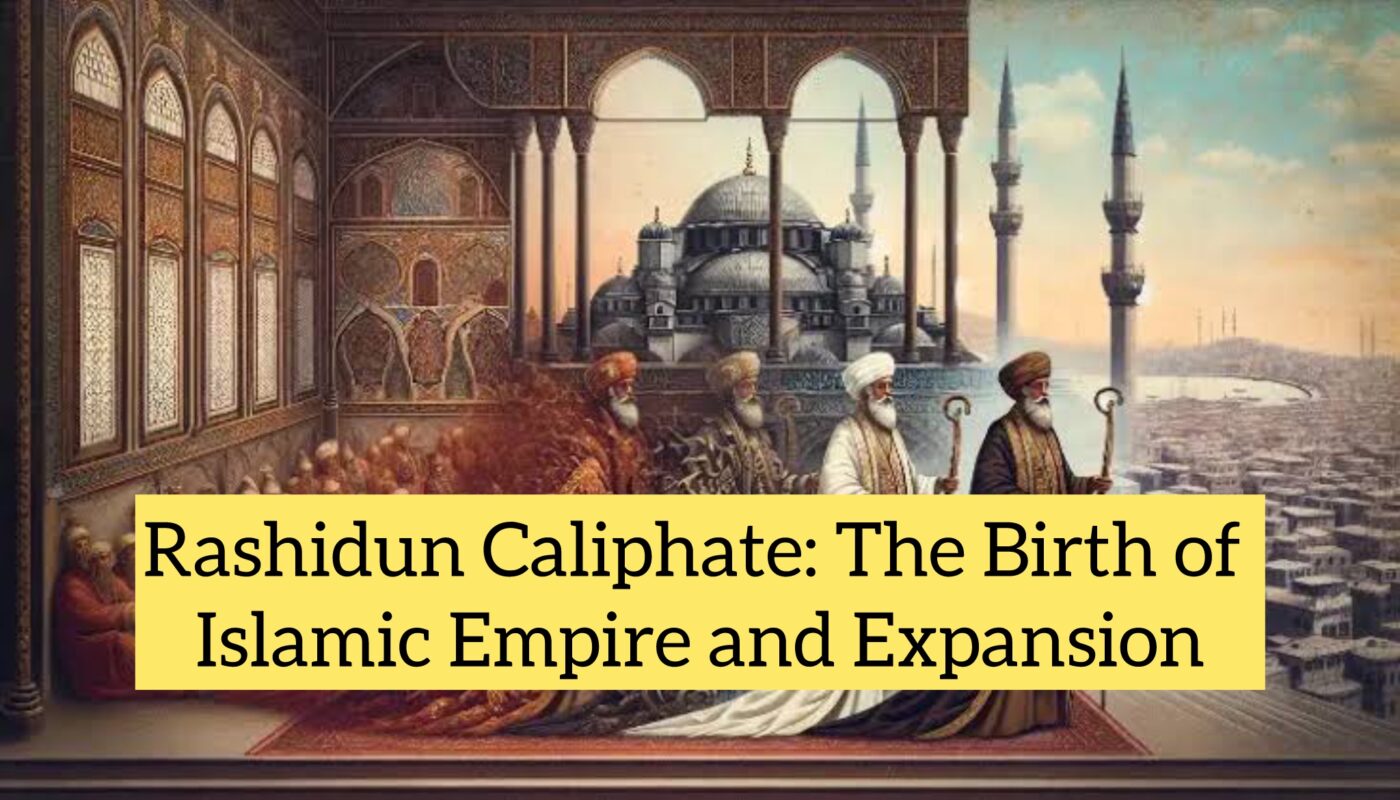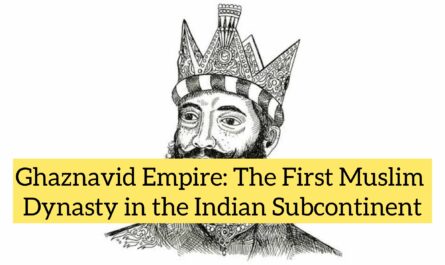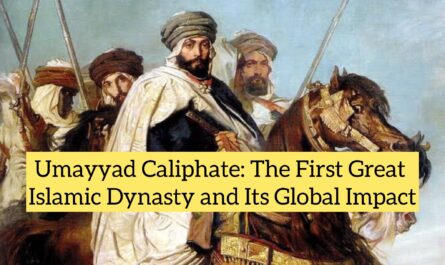Introduction
The Rashidun Caliphate (632–661 CE) was the first Islamic caliphate established after the death of the Prophet Muhammad. The term Rashidun means “Rightly Guided,” referring to the four caliphs who are considered exemplary leaders by Sunni Muslims: Abu Bakr, Umar ibn al-Khattab, Uthman ibn Affan, and Ali ibn Abi Talib.
During this 29-year period, the Islamic state expanded at an unprecedented rate—from the Arabian Peninsula across the Middle East, North Africa, and parts of Central and South Asia. The Rashidun Caliphate laid the foundation for Islamic governance, jurisprudence (Sharia), military organization, and interfaith relations.
Historical Background
The Death of the Prophet Muhammad (632 CE)
When the Prophet Muhammad passed away in 632 CE, he left behind a united Arabian Peninsula under Islamic rule but no formal successor. This led to the need for a leader who would guide the nascent Muslim community in religious and worldly matters.
Thus began the Caliphate, an institution that would define much of Islamic civilization for over a millennium.
The Four Rightly Guided Caliphs
1. Abu Bakr al-Siddiq (r. 632–634 CE)
Election and Early Challenges
-
First Caliph, elected at Saqifah shortly after Muhammad’s death
-
Faced the Ridda Wars (Wars of Apostasy) to reassert control over rebellious tribes
Achievements
-
Unified Arabia under Islam again
-
Initiated compilation of the Qur’an
-
Laid the groundwork for future military expansion into Byzantine and Sassanian territories
2. Umar ibn al-Khattab (r. 634–644 CE)
Expansion and Administration
-
Presided over massive territorial expansion
-
Conquered Syria, Egypt, Iraq, Persia, and parts of Central Asia
-
Implemented administrative reforms and created a centralized treasury (Bayt al-Mal)
Innovations
-
Established the Islamic calendar (Hijri calendar)
-
Created the Diwan (military register and payroll system)
-
Introduced the Shura (consultative council) for governance
Assassination
-
Stabbed by a Persian slave named Abu Lu’lu’a Firuz
-
Appointed a six-member council (shura) to choose his successor
3. Uthman ibn Affan (r. 644–656 CE)
Governance and Controversy
-
Continued military expansion into North Africa, Armenia, and Central Asia
-
Standardized the Qur’anic text, preventing regional variations
Discontent and Rebellion
-
Accused of nepotism—appointed family members from the Umayyad clan to key positions
-
Discontent spread across Egypt, Kufa, and Basra
-
Eventually murdered in his home during a siege by rebels in 656 CE
4. Ali ibn Abi Talib (r. 656–661 CE)
Civil War and Fragmentation
-
Faced the First Fitna (civil war) between factions of Muslims
-
Battle of the Camel (656 CE) against Aisha, Talha, and Zubair
-
Battle of Siffin (657 CE) against Muawiya (governor of Syria)
-
Led to the emergence of the Kharijites, an extremist sect
Assassination and End of Rashidun Era
-
Assassinated by a Kharijite named Ibn Muljam in 661 CE
-
His death marked the end of the Rashidun Caliphate and the beginning of the Umayyad Caliphate under Muawiya I
Geographic Expansion
During the Rashidun Caliphate, Islamic rule spread rapidly:
| Region | Former Control | Year of Conquest |
|---|---|---|
| Syria and Palestine | Byzantine Empire | 634–638 CE |
| Egypt | Byzantine Empire | 640–642 CE |
| Iraq | Sassanian Empire | 633–638 CE |
| Persia | Sassanian Empire | 637–651 CE |
| North Africa (Tripoli) | Byzantine Empire | 643 CE |
This expansion was due to:
-
Weaknesses in Byzantine and Sassanian empires
-
Strategic military leadership (e.g., Khalid ibn al-Walid, Amr ibn al-As)
-
Appeal of Islamic governance and religious tolerance
Administrative and Religious Policies
Governance
-
Caliphs were elected or selected through consultation (shura), not inherited
-
Local governors (wali) were appointed to oversee newly conquered territories
-
Maintained a simple, egalitarian approach to leadership, reflecting Islamic ideals
Religious Tolerance
-
Non-Muslims (Dhimmis) such as Christians, Jews, and Zoroastrians were allowed to practice their religions
-
Required to pay jizya (a tax in exchange for protection and exemption from military service)
-
Many local populations preferred Muslim rule due to lesser taxation and corruption
Military Organization
The Rashidun army was known for its:
-
High discipline and strategic mobility
-
Integration of Arab tribal forces
-
Use of light cavalry, ideal for desert warfare
-
Garrison cities like Kufa, Basra, and Fustat, which later became major Islamic centers
Intellectual and Religious Legacy
-
Preservation of the Qur’an: Initiated under Abu Bakr and finalized by Uthman
-
Development of Islamic jurisprudence (Fiqh): Based on the Qur’an, Hadith, and consensus
-
Shura and Caliphate: Laid foundational ideas of Islamic governance and accountability
The First Fitna: Seeds of Division
The civil war during Ali’s reign had long-lasting impacts:
-
Led to the Sunni-Shia split
-
Sunnis recognized all four Rashidun caliphs as legitimate
-
Shias believe Ali was the rightful successor from the start
-
-
Created political and theological rifts that continue into the modern era
Key Contributions of the Rashidun Caliphate
| Area | Contributions |
|---|---|
| Governance | Shura-based leadership, early Islamic law |
| Religion | Preservation and standardization of the Qur’an |
| Military | Rapid expansion, skilled generals |
| Society | Tolerance for non-Muslims, fair taxation |
| Infrastructure | Establishment of garrison cities, postal system |
End of the Rashidun Caliphate
-
661 CE: Ali is assassinated in Kufa
-
Muawiya I seizes power and establishes the Umayyad Caliphate
-
Transition from elected caliphate to hereditary monarchy
-
Rashidun era is idealized by many Muslims as the most authentic form of Islamic leadership
Conclusion
The Rashidun Caliphate was a transformative period in Islamic and world history. It expanded the reach of Islam far beyond Arabia, introduced effective administrative models, and fostered an environment of relative tolerance and justice. Though short-lived, its legacy profoundly shaped Islamic theology, law, governance, and interfaith relations for centuries to come.
For many Muslims, the Rashidun period represents a golden age of unity, faith, and justice—a model of leadership rooted in spiritual and moral responsibility.
Frequently Asked Questions (FAQs)
What does “Rashidun” mean?
“Rashidun” means “Rightly Guided” and refers to the first four caliphs of Islam.
Who were the four Rashidun caliphs?
-
Abu Bakr al-Siddiq
-
Umar ibn al-Khattab
-
Uthman ibn Affan
-
Ali ibn Abi Talib
How long did the Rashidun Caliphate last?
From 632 to 661 CE, a total of 29 years.
Why did the Rashidun Caliphate collapse?
It ended due to civil wars, assassinations, and the rise of dynastic rule under the Umayyads.
What was the Rashidun Caliphate’s greatest achievement?
The rapid and vast expansion of Islam, along with the standardization of the Qur’an and establishment of Islamic governance.



